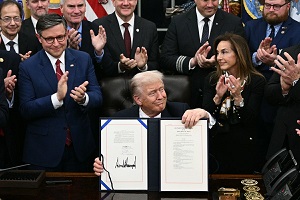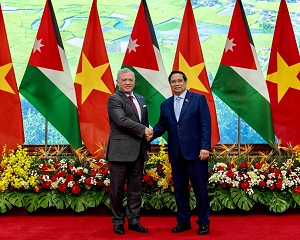A turning point for clean energy - By Agnes Dasewicz , The Jordan Times
WASHINGTON, DC — This year marks a historic milestone: For the first time, global renewable-energy production has surpassed coal. In the first half of 2025, renewables accounted for more than 34 per cent of the world’s electricity, while coal’s share fell to just above 33 per cent. Notably, these gains were largely driven by emerging economies.
As the world’s attention turns to the United Nations Climate Change Conference in Brazil (COP30), this milestone serves as a powerful reminder that the clean-energy transition is already underway. Having led investments at the US International Development Finance Corporation and now serving as chief investment officer at the Global Energy Alliance for People and Planet, I know a promising business opportunity when I see one.
According to the International Renewable Energy Agency, 91 per cent of new renewable-energy projects are now cheaper than their fossil-fuel counterparts. This finding provides clear evidence that, despite the ongoing growth in coal and oil use, renewables are both economically and technically viable throughout much of the world.
We cannot afford to let today’s momentum slip away.
To reduce climate pollution, promote sustainable economic growth, and strengthen energy resilience where it is needed most, we must build on these achievements. As we approach the tenth anniversary of the Paris climate agreement, meaningful global climate action is still possible, even in the face of escalating geopolitical tensions and competing national priorities.
Yet, such progress is inherently fragile. All too often, clean-energy adoption stalls once the infrastructure is in place. Solar projects, for example, can fail when communities lack the necessary tools and financing to make full use of the electricity they produce.
Providing solar panels is not enough. To lock in the benefits of renewables, governments must invest not only in power generation but also in systems, training, and equipment – such as electric mills and water pumps – that enable communities and countries to harness clean energy for business growth and job creation.
When implemented effectively, such investments deliver benefits across the board. Climate goals advance as renewables replace costly, polluting fuels. Communities gain access to affordable power, enabling them to improve education and healthcare, create jobs and raise incomes. And with energy companies profiting from rising demand, emerging economies can attract new investment.
The challenge is enormous, but so is the opportunity. The World Bank projects that 1.2 billion young people in developing economies will reach working age over the next decade, but that only 420 million new jobs will be created by then. Access to clean energy, and the opportunities it brings, offers a way to bridge this gap before it becomes a global crisis. The World Economic Forum estimates that the renewables industry alone could generate more than 30 million jobs and mobilize $2.2-2.8 trillion annually. Embedding renewable technologies into other downstream sectors such as industry and agriculture could create a further 500 million new jobs and improve the quality of 700 million existing ones.
To succeed, we must align energy policies with broader development objectives, integrate renewables into local industries, and accelerate investment in the equipment and training needed to use it effectively.
Across Africa, this approach is already delivering tangible results. In Nigeria, farmers and traders are increasingly using solar-powered irrigation pumps, cold-storage facilities, and mills. These investments, in turn, have fueled a wave of distributed renewable-energy projects that are rapidly transforming local power systems.
In the Amazon, where COP30 is underway, the government of Brazil is investing $800 million to expand energy access and transition away from reliance on diesel. My organization is helping to ensure that this new renewable energy creates jobs and powers sustainable economic development for thousands of farmers and entrepreneurs.
India offers a useful model for emerging economies seeking to strengthen their power grids and absorb growing renewable capacity. In New Delhi, the country’s first commercial, utility-scale battery-energy storage system – the largest in South Asia – now guarantees a reliable supply of clean electricity to 100,000 low-income households and businesses. Meanwhile, solar plants in Rajasthan provide steady daytime power to 40,000 farmers. And in Uttar Pradesh, a women’s entrepreneurship program aims to help 500,000 women-owned businesses adopt clean-energy technologies by 2030.
Together, these examples show that the clean-energy transition is within reach. But with 685 million people worldwide lacking electricity, and more than a billion relying on unaffordable or unreliable supply, there is still a long way to go.
The choice before us is clear: continue investing in renewables or slide back into fossil-fuel dependence. By making clean energy the foundation for job creation and economic opportunity, we can turn today’s milestones into a future where clean power drives growth and ensures prosperity for all.
Agnes Dasewicz is chief programme and Investment Officer at the Global Energy Alliance for People and Planet




